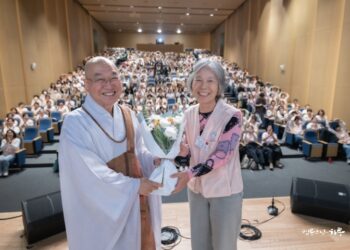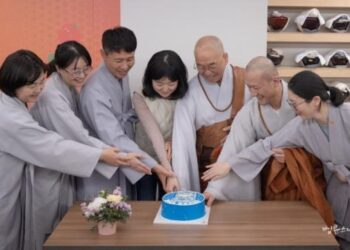Aug 11. 2025. Visit to Cheonryongsa Temple on Mt. Namsan, Gyeongju
Hello. Today, Sunim planned to visit Cheonryongsa Temple on Mt. Namsan in Gyeongju with the community Dharma Teachers and then hold a meeting with the planning committee members of The Peace Foundation.
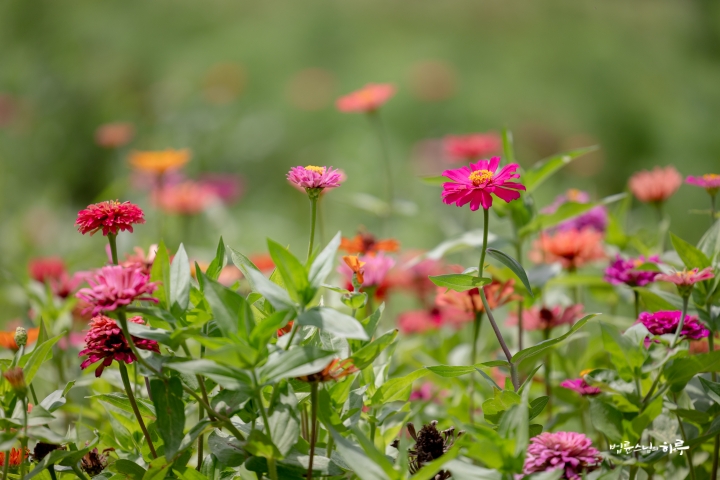
After completing morning practice and meditation, Sunim departed from Dubuk Jungto Retreat Center at 9:20 AM and headed to Gyeongju Station. At Gyeongju Station, he picked up The Peace Foundation planning committee members and drove together to Mt. Namsan in Gyeongju.
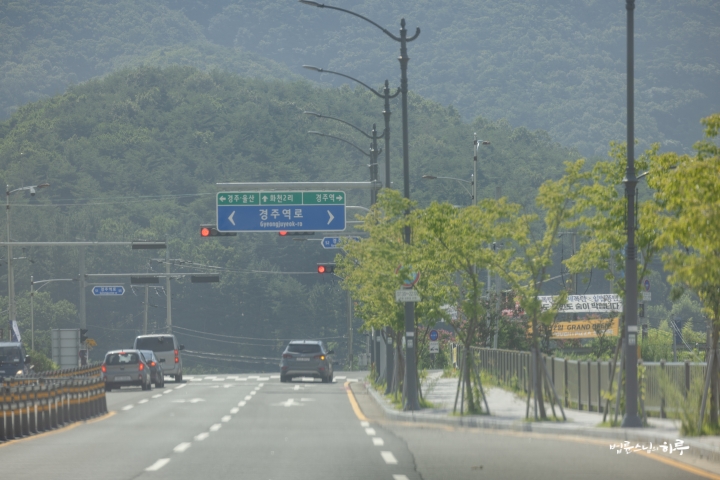
After arriving at Baegunam, they walked down the mountain path and arrived at Cheonryongsa Temple at 10:40 AM.
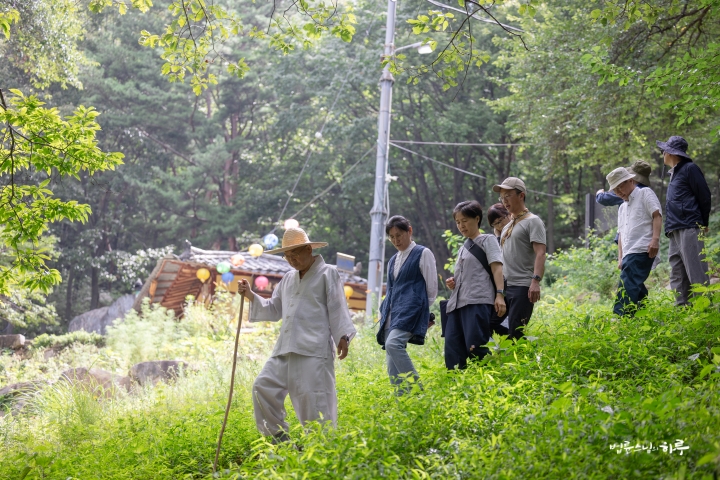
The community Dharma Teachers who had arrived earlier warmly welcomed Sunim.
“Sunim, welcome!”
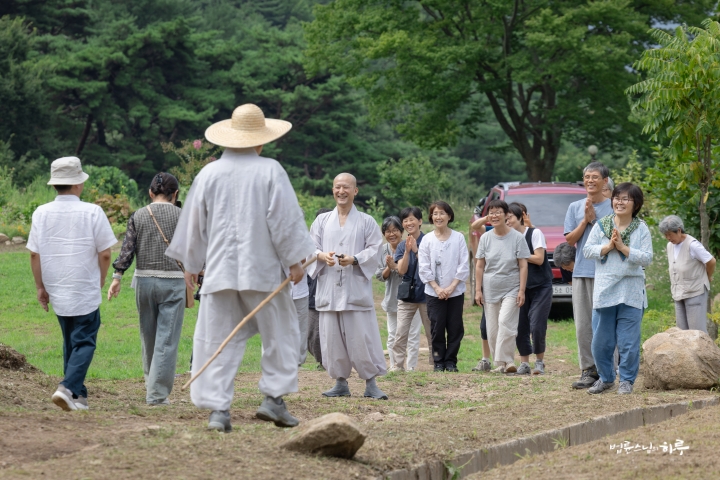
Everyone first went to the Dharma hall and performed three prostrations. The community Dharma Teachers also greeted Sunim with three prostrations upon his return from the Northeast Asian History Tour.

Sunim thanked them for coming in his characteristic Gyeongsang Province style with a smile.
“What are you all doing here when you’re so busy?” (Laughter)
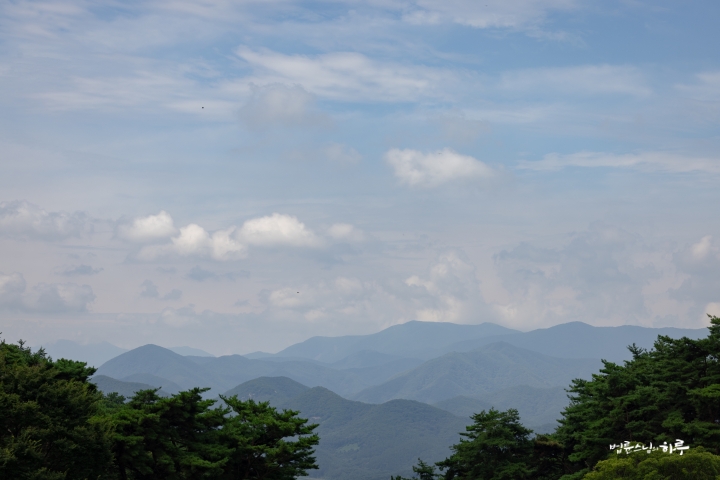
They then moved to the meditation hall where Venerable Yusu, chairman of the Jungto Society Construction Committee, presented the plans for the reconstruction of Cheonryongsa Temple scheduled to begin next year.
According to the Samguk Yusa (Memorabilia of the Three Kingdoms), there is a record stating, “This site is an auspicious location. When Cheonryongsa Temple prospers, the nation prospers; when Cheonryongsa Temple falls, the nation falls.” One of Master Yongseong’s last wishes was to rebuild the temple at this location. During the Japanese colonial period, it was to pray for the nation’s independence, and afterward, it was to rebuild this temple for unification and the development of a new Republic of Korea. Therefore, Jungto Society has been working for a long time on the reconstruction of Cheonryongsa Temple to open the fortune of a unified Republic of Korea. Finally, they have received permission from the Cultural Heritage Administration and established a plan.

“Cheonryongsa Temple here is a site for protecting the nation and the Dharma with 1,500 years of history. We are conducting many reviews for the reconstruction project here, and the biggest issue currently is where to locate the main hall.”

After explaining the overall land layout and topography, four preliminary proposals created by the Construction Committee were presented. After listening to the presentation, Sunim provided additional explanations.
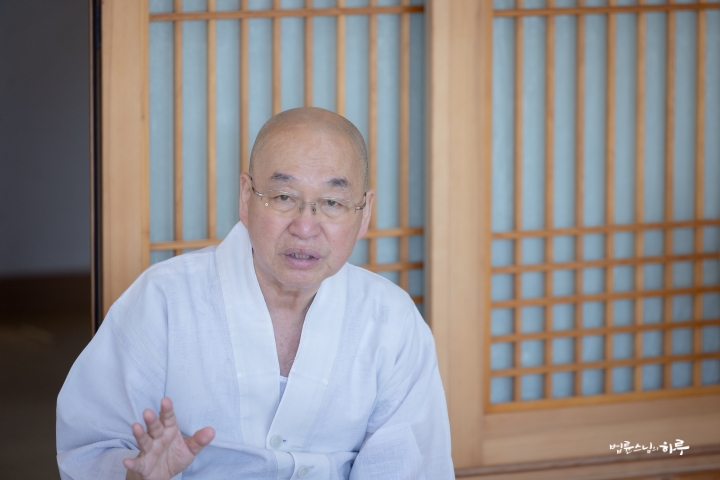
“The best approach would be to build in the original location, but since we must consider the principle of cultural heritage protection that underground remains should not be damaged, building in the original location is said to be impossible. That’s why the Construction Committee has come up with various alternatives. The tradition for the past thousand years has been to build temples with the main gate, pagoda, main hall, and lecture hall in a straight line, following the feng shui principles of the blue dragon on the left and white tiger on the right. If we build contrary to this, people will continue to raise issues for years to come. We’ve called you all here to gather wisdom on how to build without deviating too much from tradition.”
They had a Q&A session for about 30 minutes with the attendees. Various questions and suggestions were exchanged regarding the contentious issues.
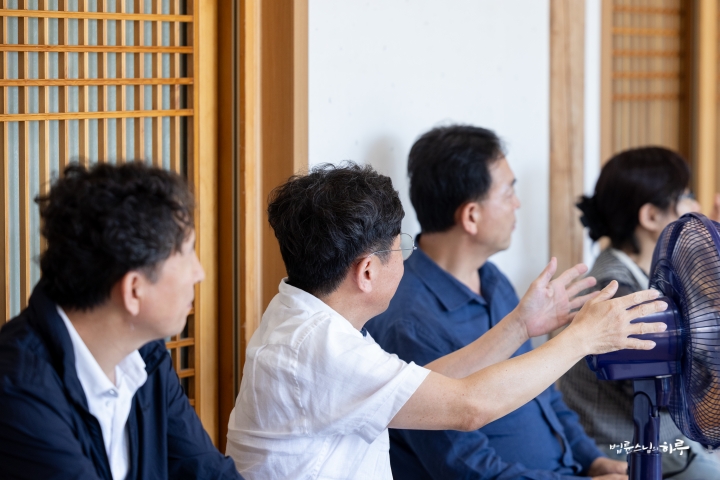
Since it was difficult to grasp the situation just from explanations, they decided to go to the site for inspection.
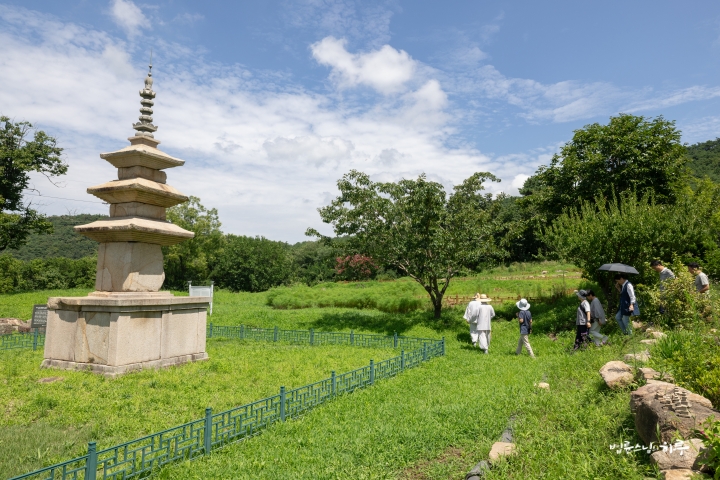
Going to the area where permission was granted to build new structures, Sunim explained.
“The area where we have permission to construct begins from here. Please take a look and give your opinions on where the main hall should be built and where the living quarters should be located.”
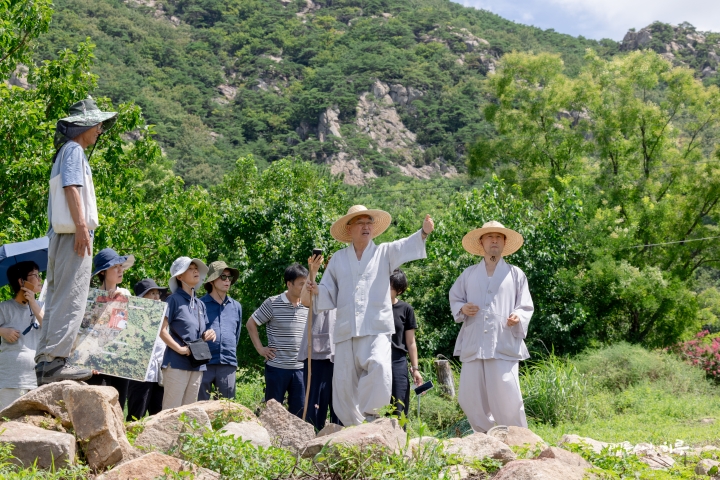
For an hour, they toured around Cheonryongsa Temple, examining from various angles which plan would be most appropriate considering the topography and the location of the pagoda.
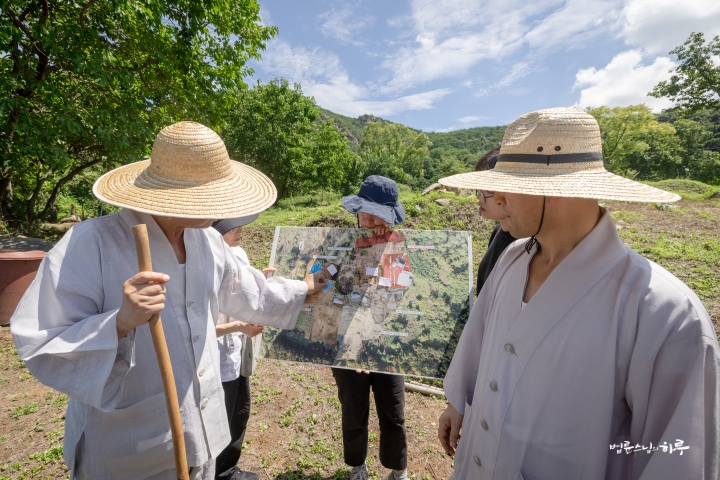
After seeing the topography directly on site, each of the four proposals from the Construction Committee had its pros and cons. They had to consider the location of the pagoda, the topography, and the direction, making it difficult to reach a conclusion easily. They decided to conduct more site visits with monks who have more expertise in this area and concluded the discussion at noon.
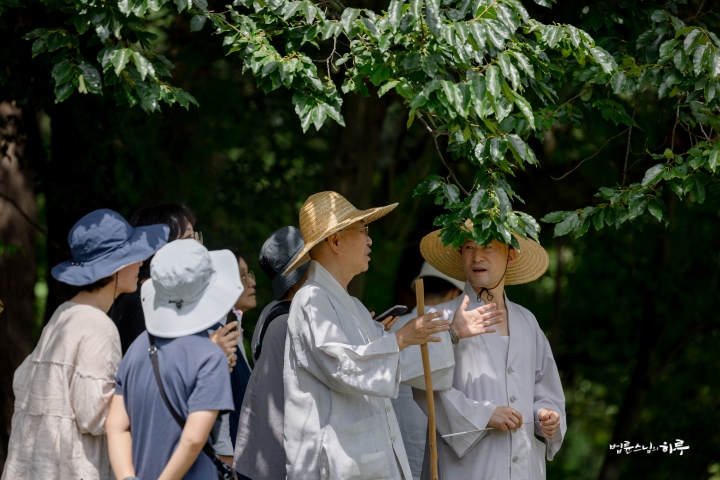
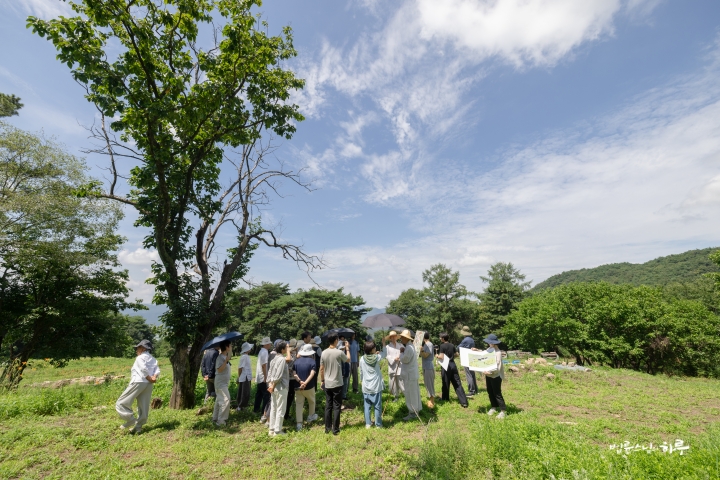
They had planned to walk down through Teumsugol Valley, but the hiking trail was closed due to heavy rain. They returned the way they came in the morning, climbed up to Baegunam, and then drove down Mt. Namsan in Gyeongju.
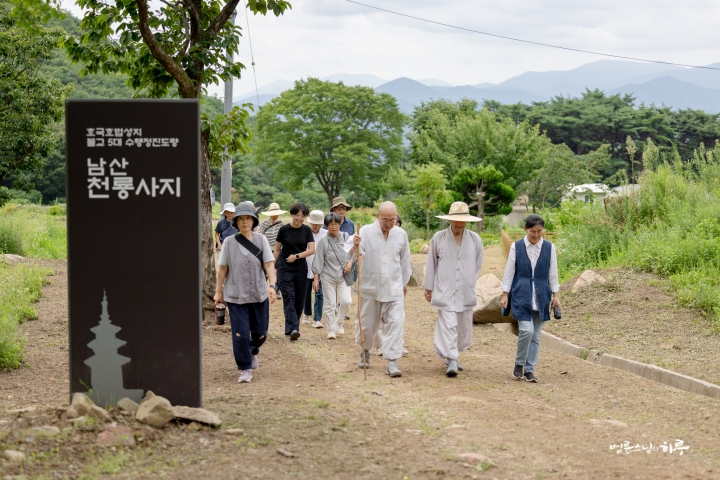
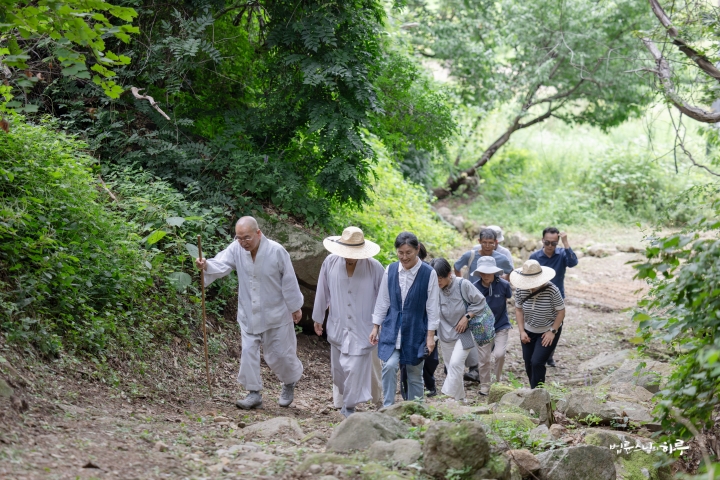
Sunim headed to Dubuk Jungto Retreat Center with The Peace Foundation planning committee members.
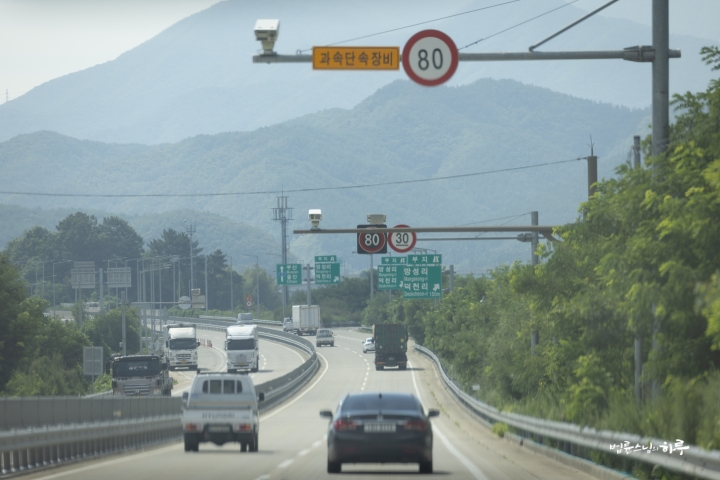
After having lunch together, they continued the meeting with The Peace Foundation planning committee members in the afternoon. The meeting continued until sunset and into the evening. They discussed The Peace Foundation’s projects for the second half of the year while forecasting how inter-Korean and US-North Korea relations would develop, finishing the meeting late at night.
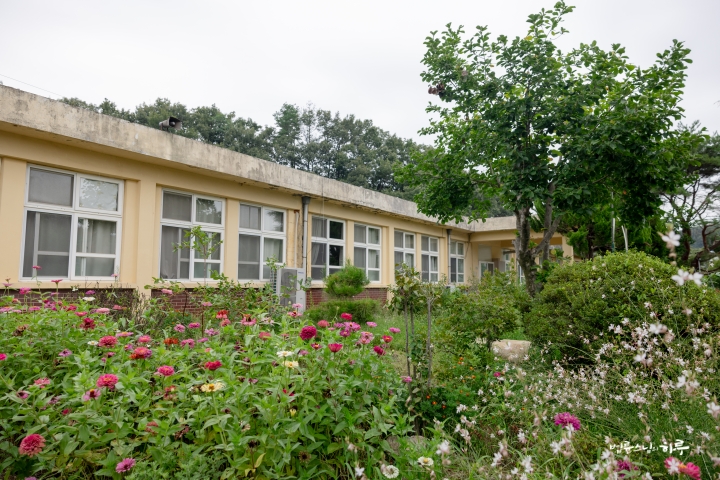
Tomorrow, Sunim is scheduled to give a Dharma Q&A lecture for military personnel and their families at the invitation of the Naval Air Command in Pohang.
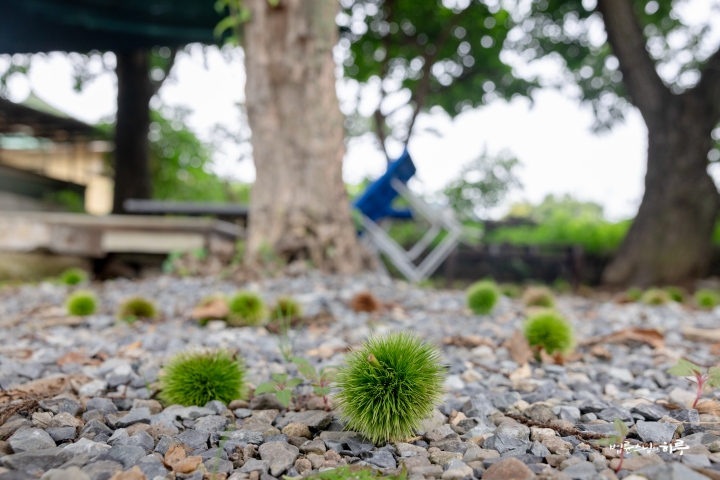
Since there was no Dharma talk today, I’ll conclude by sharing a conversation between Sunim and a questioner from the Dharma Q&A held in Goyang City on the 18th of last month.
Should I Oppose My Son’s Marriage to His Girlfriend Who Has Battled Breast Cancer?

“Why is your position important? You’re not the one getting married.” (Laughter)
“My husband keeps forcing me to play some role.”
“You have no authority whatsoever.”
“Do I really have no authority?”
“You have no authority at all. When a child marries before age twenty, they need permission from their parents as guardians. Children under twenty cannot legally marry, become monks, or become priests without parental permission. However, once they’re over twenty, they become adults legally, ethically, and morally, and have the right to self-determination. Marriage falls under the right to self-determination. If parents get involved in their children’s marriage, it’s merely a customary cultural practice of parents being involved in their children’s marriages in the past.
Of course, you can express your opinion, but not as a parent – only as someone with property who has conditions to reflect their opinion. You can only approach it through interests, such as offering more financial support if they follow the parents’ wishes. What we commonly call ‘parental marriage approval’ actually comes from the context that financial support may vary depending on that approval. In conclusion, parents have no authority to be involved in their children’s marriage. Of course, as parents who have lived longer than their children, you can express opinions like ‘I wish it were like this’ or ‘I wish it were like that,’ but the decision-making power lies entirely with the adult party involved. This distinction must be made first.
The second point to consider is: Is your son just trying to date, or is he trying to get married?”
“He wants to get married.”
“Then your son is an adult who can marry on his own, so why does he keep talking to his parents about marriage? Is he perhaps asking for wedding funds?”
“No, he’s not asking for money.”
“Then he should just make his own decision.”
“From our life experience, a woman who has received breast cancer treatment might develop uterine cancer after marriage or face recurrence risks. I don’t understand why he wants to walk that thorny path.”
“There’s a risk of traffic accidents when you drive a car. Should we not drive cars? There’s a risk of crashes when you fly in an airplane. Should we not fly? Whatever you do, there are always risks involved. Of course, cancer is a disease with a somewhat higher risk of recurrence, but generally, if cancer hasn’t recurred four years after surgery, the possibility of recurrence is considered low for the next ten years or more. Since cancer can spread invisibly throughout the body, most cases of metastasis to other parts of the body or recurrence happen within three years after surgery.
If your son truly likes his current girlfriend, shouldn’t he marry her even sooner if there’s a higher chance she might die early? If she were to die, he wouldn’t be able to marry her at all. If they marry and live together for even a few years before being separated by death, he can have memories of living with someone he loved. Let’s all think about it from a different perspective. If you have someone you truly love, wouldn’t your heart feel much better if you lived with that person for even a few years, even if they died? Living with someone you love and then being separated by death isn’t a loss because it also creates an opportunity to live with someone else. So I don’t understand why you oppose this marriage. How about changing your perspective like this?”
“It’s killing two birds with one stone for my son.” (Laughter)
“Yes. When you think about it, this situation isn’t a problem at all. Your husband can have his own thoughts, so there’s nothing you can do if he opposes it. In such cases, no matter what your husband says, just respond with ‘I understand.’ Don’t say things like ‘I asked Sunim and he said this is a good thing.’ Then your husband will say, ‘What does a monk who’s never been married know about this?’ So just listen to your husband and say ‘I understand well,’ and to your son, don’t force your husband’s opinion on him, just convey it as ‘This is your father’s opinion.’ If your son still wants to marry, just tell your husband ‘Our son still wants to get married’ – you absolutely must not express your own opinion. Generally, conflicts grow because parents express their own opinions. If I side with my son, I’ll fight with my husband; if I side with my husband, I’ll have conflict with my son. So just say ‘yes’ here and ‘yes’ there, acting only as a messenger.
If it were like the old days when you could only marry once or had to have children, it might be a problem, but nowadays you don’t have to get married, don’t have to have children, and can even remarry after having children. Since all possibilities are open, your situation isn’t serious enough to worry about. From my perspective, it’s not a concern at all. If he marries someone he likes, has children, and then loses her to death, he can remember her while looking at the child who resembles her, and he can also marry another woman – it’s killing two birds with one stone. It’s nothing at all. So I hope at least you will be free from this worry starting today. However, you absolutely must not become a mediator in this situation.”
“Yes, thank you. My concern has been resolved.”



